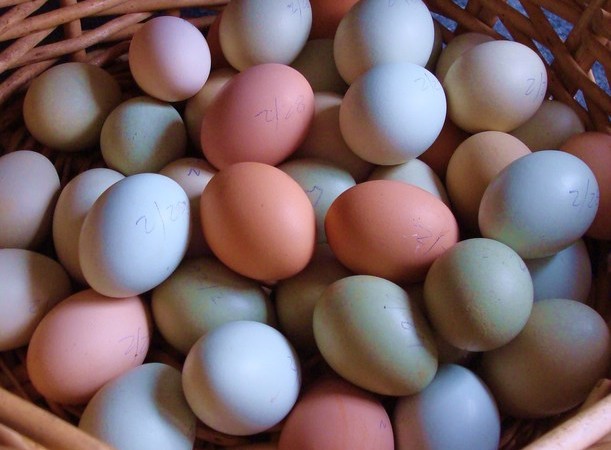

Depending on the breed of chicken, most eggs are uniform in colour, ranging from white, pink and green, through to dark brown and blue. But a hen that lays brown eggs may occasionally begin laying white eggs.
The answers lie in genetics. All egg shells start off white in the hen, and gain pigmentation (colour) as they progress down the reproductive tract. Each breed of chicken has a different pigmentation to create the distinctive colour of the final egg.
White eggs: These lack brown pigmentation. But it is possible for a white egg-layer to lay eggs with a very light brown tint.
Brown eggs: This is the most common colour. It is caused by a pigment called protoporphyrin that is applied during the last few hours as the egg passes through the uterus.
Blue eggs: These are produced by a pigmentation called biliverdin that is applied to the eggshell early on in its development. It appears on both the inside and outside of the shell. The amount of biliverdin in the eggshell gland diminishes as the bird ages
Green eggs: This results from a combination of protoporphyrin and biliverdin. The blue pigment is applied to the eggshell first and then overlaid by the brown pigment. Depending on the intensity of brown pigment, the egg can vary from light green to dark olive.
There is no scientific evidence that an egg of a certain colour is healthier for you than an egg of another colour. Similarly, the relationship between egg colour and the hen’s earlobe colour is coincidental. The colour of each is determined by entirely different genes.
 Contact Jaguza Support
Contact Jaguza Support